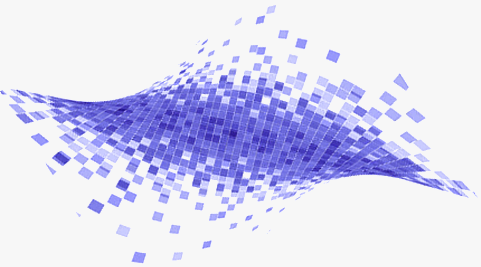Accredited InvestorsAltcoinAnatoli UnitskyAnti-Money Laundering (AML) In CryptoAPIArbitrageArtCoin TokenArticle DirectoryASICAuction Terminology GlossaryBasics of Stock Market InvestingBear MarketBest Crypto Payment Provider In the WorldBitcoinBlockchainBlockchain ConfirmationBlockchain Consensus MechanismBlockchain ForkBlockchain GlossaryBored Ape Yacht ClubBuild a Business That OutperformsBull MarketBuying SkyWay SharesByzantine Fault Tolerance (BFT) ExplainedCasascius CoinCentral Bank Digital Currency (CBDC)Centralized Crypto ExchangeCoinCoinsetCold WalletCollateralCommodity Futures Trading Commission (CFTC)Cross-Chain TechnologyCRUCrypto ExchangeCrypto GlossaryCrypto JokesCrypto Terms to KnowCrypto TickerCryptocurrencyCryptographyCryptojackingCryptounit BlockchainCryptounit GlossaryCryptounit ProgramdApp (Decentralized Application)Dead CoinDecentralized Exchange (DEX)Decentralized Finance (DeFi)Difference Between Bitcoin and EthereumDifferent Ways of Investing MoneyDigital CurrencyDistributed LedgerDo Your Own Research (DYOR)Dollar Cost Averaging (DCA)Dow Jones Industrial Average (DJIA)EncryptionERC-20ERC-721EthereumEvoScentFear Of Missing Out (FOMO)Fear, Uncertainty and Doubt (FUD)Fiat MoneyFNT Fintech CompanyGenesis BlockGlobal Unit PayGlossary of Banking TermsGlossary of Business TermsGlossary of Financial TermsHalvingHODLHot WalletHow Do I Start InvestingHow Rich is Satoshi Nakamoto?How to Create a BlockchainHow to Find Private InvestorsHow to Get Into FintechHow to Program Smart ContractsI Am Thrilled to Be a Part of This Global ProjectInitial Coin Offering (ICO)Initial Public Offering (IPO)Initial Token Offering (ITO)Innovation Basalt TechnologyInnovative Transportation TechnologiesInternational Bank Account Number (IBAN)Investing in Gold Mining StocksInvesting in Gold MiningJagerJoy of Missing Out (JOMO)Know Your Customer (KYC)LedgerLiquidity in CryptocurrencyMaker and Taker Fees in Crypto TradingMarket Capitalization (Market Cap)Meme CoinMetal Credit CardMetaMaskMillenials Now Have Access to Generational WealthMy Best Investment EverNew Digital EvolutionNFT GlossaryOff-Chain TransactionsOn-Chain TransactionsOpen Edition NFTPeer-to-Peer (P2P)Personal Loan GlossaryProbably the Best STO on the MarketProof of Stake (PoS)Real Estate Glossary of TermsReal Estate Investing GlossaryRebase TokenSecurities and Exchange Commission (SEC)Security Token ExchangesSecurity Token Offering (STO)Soulbound Decentralized Identities for Security TokensSoulbound ID Launch by Stobox Proves a SuccessSoulbound TokensStoboxStock Market GlossaryTestimonialsTether Platform and Token (USDT)UnitEx ExchangeUnitsky String TechnologiesUNTBUSDUValidatorWe Started Investing When We Were 25What are Blue Chip NFT?What are Blue Chip Stocks?What are Crypto Assets?What are Crypto Smart Contracts?What are CryptoPunks NFT?What are Digital Assets?What are Digital Collectibles?What are Gas Fees?What are Gas Wars?What are Hashmasks?What are Non Fungible Tokens?What are Non-Sufficient Funds (NSF)?What are Soulbound Tokens (SBT)?What are Stablecoins in Crypto?What are Transactions Per Second (TPS)?What are Utility NFTs?What are Utility Tokens?What Does Burning Crypto Mean?What Does Diamond Hands Mean?What Does Paper Hands Mean?What Does To The Moon Mean?What Does WAGMI Mean?What Happened to Satoshi Nakamoto?What is a 51% Attack?What is a Baby Boomer?What is a Backlink?What is a Banner?What is a Barcode?What is a Bid-Ask Spread in Crypto?What is a Block in Blockchain?What is a Block Reward?What is a Blockchain Address?What is a Blockchain Node?What is a Blockchain Oracle?What is a Blog?What is a Bond?What is a Bot?What is a Broker?What is a Business Accelerator?What is a Cash Cow?What is a Commercial Bank?What is a Commodity?What is a Con?What is a Credit?What is a Credit Limit?What is a Credit Rating?What is a Crypto Airdrop?What is a Crypto Bridge?What is a Crypto Scam?What is a Crypto Token?What is a Crypto Wallet?What is a Crypto Whale?What is a Crypto Winter?What is a Cryptocurrency Public Ledger?What is a Cryptocurrency Roadmap?What is a DAO?What is a Dark Pool?What is a Day Trader?What is a Dead Cat Bounce?What is a Default?What is a Derivative?What is a Digital Credit Card?What is a Fiscal Quarter?What is a Fungible Token?What is a Governance Token?What is a Grace Period?What is a Hard Fork?What is a Hot Wallet?What is a Hybrid Blockchain?What is a Hybrid PoW/PoS?What is a Joint Account?What is a Market Cap?What is a Merkle Tree in Blockchain?What is a Mining Farm?What is a Nonce? What is a PFP NFT?What is a POS System?What is a Prepaid Card?What is a Private Blockchain?What is a Private Key?What is a Public Blockchain?What is a Public Key?What is a Reserve Currency?What is a Ring Signature?What is a Routing Number?What is a Rug Pull in Crypto?What is a Safe Deposit Box?What is a Satoshi?What is a Security Token?What is a Seed Phrase?What is a Shitcoin?What is a Sidechain?What is a Soft Fork?What is a Spot Market?What is a State Bank?What is a SWIFT Code?What is a Tax Identification Number (TIN)?What is a Time Deposit?What is a Transaction Account?What is a Variable Interest Rate?What is a Virtual Assistant (VA)?What is a Virtual Card?What is a Virtual Currency?What is a Visa Card?What is a Whitelist in Crypto?What is a Whitepaper?What is Accounts Payable (AP)?What is AMA in Crypto?What is Amortization?What is an Accrual?What is an ACH Transfer?What is an Actuary?What is an Addendum?What is an Algorithm?What is an Angel Investor?What is an Annuity?What is an Asset?What is an ATM?What is an Atomic Swap?What is an Audit?What is an Avatar?What is an EIN?What is an Embargo?What is an Entrepreneur?What is an IDO (Initial Dex Offering)?What is an Interest Rate?What is an Internet cookie?What is an Investment Bank?What is an NFT Drop?What is an NFT Floor Price?What is an Ommer Block?What is an Orphan Block?What is an Outstanding Check?What is an Overdraft?What is Artificial Intelligence (AI)?What is B2B (Business-to-Business)?What is B2G (Business-to-Government)?What is Bartering?What is Bitcoin Dominance?What is Bitcoin Pizza Day?What is Blockchain Immutability?What is Blockchain Used For?What is BRICS?What is Business-to-Consumer (B2C)?What is C2C (Customer to Customer)?What is Capitalism?What is Catfishing?What is CFD Trading?What is Check Kiting?What is Cloud Mining?What is Communism?What is Content Marketing?What is Decentralization in Blockchain?What is DeFi in Crypto?What is Delisting?What is Depreciation?What is Digital Marketing?What is Diversification?What is Double Spending?What is Dumb Money?What is Dumping?What is Earnings Per Share (EPS)?What is Economics?What is Email Marketing?What is Equity?What is Etherscan?What is Fintech?What is Foreign currency?What is Forex?What is Fundamental Analysis (FA)?What is GameFi?What is Generative Art NFT?What is Gwei?What is Hard Currency?What is Hash Rate?What is Hashing in Blockchain?What is Inflation?What is Initial Game Offering (IGO)?What is Interest?What is Interest Income?What is Mainnet?What is Mastercard?What is Metaverse in Crypto?What is Mining in Cryptocurrency?What is Minting NFT?What is Mobile Banking?What is Money Laundering?What is NFT Alpha?What is NFT Metadata?What is NFT Rarity?What is NGMI Meaning?What is Nominal Interest Rate?What is Online Banking?What is Open-End Credit?What is OpenSea NFT Marketplace?What is Personal Identification Number (PIN)?What is Play-to-Earn?What is Polygon?What is Proof of Authority (PoA)?What is Proof of Work (PoW)?What is Public Key Cryptography?What is Pump and Dump?What is Quantum Computing?What is Refinancing?What is Retail Banking?What is Ripple?What is Sharding?What is Slippage in Crypto?What is Smart Money?What is Solvency?What is Soulbound ID?What is SSL?What is Staking in Cryptocurrency?What is Technical Analysis (TA)?What is Testnet?What is the Ask Price?What is the Better Business Bureau (BBB)?What is the Bid Price?What is the Dark Web?What is the InterPlanetary File System (IPFS)?What is the Gold Standard?What is the Lightning Network?What is the Prime Rate?What is the Sandbox?What is the Secondary Market?What is the World Bank?What is Tier 1 Capital?What is Tokenomics?What is TRC-20?What is Universal Banking?What is Unspent Transaction Output (UTXO)?What is Usury?What is Volatility in Crypto?What is Wash Trading?What is Web3?What is Whisper?What is XRP?What is Zero-Knowledge Proof (ZKP)?Who is Beeple?Who is Satoshi Nakamoto?Who is Vitalik Buterin?Why Tokenization is a Safe HavenWhy You Should Try Your Hand at Trading
Distributed Ledger
- Home
- Blockchain Glossary
- Distributed Ledger
Ledgers have been used for accounting since the early days of writing and money, with materials such as clay, stone, papyrus, and paper.

However, the digitization of paper records did not take place until the widespread use of computers in the 1980s and '90s, often through manual data entry. These early digital ledgers were primarily focused on emulating the cataloguing and accounting of paper-based systems, and as a result, paper-based institutions, such as money, seals, written signatures, bills, certificates, and double-entry bookkeeping, continue to be essential in our society.
The development of distributed ledgers has been made possible by advances in computing power and cryptography, as well as the exploration and implementation of new algorithms.
What is a Distributed Ledger?
A distributed ledger is a database that is spread across multiple computers or nodes. It is a new type of digital ledger that uses a decentralized and peer-to-peer network to record transactions. The network is composed of a group of participants, or nodes, that work together to verify and record the transactions that occur on the network.
Unlike traditional centralized ledgers, which are maintained by a single entity, a distributed ledger is maintained by a network of participants, with each participant having a copy of the ledger. Each participant has an identical copy of the ledger and all transactions on the network are recorded on each copy of the ledger. This creates a permanent and tamper-proof record of all transactions on the network.
One of the most notable examples of a distributed ledger is the blockchain. A blockchain is a type of distributed ledger that is composed of a chain of blocks, each of which contains a batch of transactions. Each block is linked to the previous block, forming a chain of blocks, hence the name "blockchain".
Blockchain technology is the foundation of many digital currencies, including Bitcoin and Ethereum. However, the potential uses for distributed ledgers go far beyond digital currencies. They can be used to create a wide range of decentralized applications, including smart contracts, supply chain management systems, and voting systems.
Distributed ledgers are also being explored by financial institutions, governments, and other organizations as a way to increase efficiency, reduce costs, and improve transparency. They are particularly appealing in industries where trust is paramount, such as banking, insurance, and real estate.
Distributed ledgers are secure, transparent, and efficient, making them an exciting and promising technology for the future. While there are still challenges to overcome, such as scalability and regulatory issues, the potential benefits of distributed ledgers are too significant to ignore.
Distributed Ledger vs Distributed Ledger Technology (DLT)
A distributed ledger is a type of database that is spread across a network of computers or nodes, where each node has a copy of the ledger.
Distributed ledger technology (DLT), on the other hand, is a broader term that refers to the technology that underlies distributed ledgers. This includes not only the software used to create and manage distributed ledgers but also the hardware, protocols, and other components that enable decentralized networks to function.
So while a distributed ledger is a specific type of database, distributed ledger technology encompasses a wider range of technologies and tools that support the creation and management of these decentralized systems.
Blockchain vs Distributed Ledger
There are some differences between Blockchain and Distributed Ledger Technology, although they are generally considered to be the same thing. While Blockchain is a type of Distributed Ledger Technology, not every Distributed Ledger can be considered a Blockchain.
Although they share the same underlying concept, Blockchain technology is more advanced and has many useful functionalities. This has allowed it to find many real-world implementations and applications, particularly in the banking and financial industry. However, there are other variants of Distributed Ledger Technology that have not seen as many real-world use cases.
One of the key differences between the two technologies is the way blocks are organized. In a Distributed Ledger, blocks can be organized in different ways, while in a Blockchain, they are added in the form of a chain. Additionally, Blockchain technology often requires a proof of work consensus mechanism for the validation of each transaction, while this is not necessary for all types of Distributed Ledger Technology.
Finally, the trust among participating nodes is higher for Distributed Ledger Technology, as the decision-making powers can be distributed among all participants. In a Blockchain, trust among participating nodes is generally lower, as the power to mine blocks can be concentrated in the hands of a few.
Future of Distributed Ledger Technology (DLT)
DLT is being promoted as a solution to many problems on the internet, with the potential to drastically solve these issues. Referred to as the "Internet of Value," DLT can enable transactions and processes to occur in real-time with the help of the internet. The technology has the potential to revolutionize various sectors, including finance, banking, cyber security, healthcare, government, and data security.
Enterprises and visionaries are now challenged to establish networks of entities that can work together to take advantage of DLT to transform how they share and store records. Additionally, DLT can enable entirely new processes and business models.
Related Articles

Ledger
A ledger refers to transactions database. In cryptocurrencies, the ledger is the transaction history of a given cryptocurrency as stored on the...

What is a Cryptocurrency Public Ledger?
The public ledger serves as a record-keeping system, providing secure and anonymous identification of participants, recording of their cryptocurrency balances, and a history of all valid transactions between...

What is a Blockchain Node?
Within a network, nodes can have a range of duties, but the majority of nodes are responsible for tracking and verifying network transactions. Some nodes also function as network communication hubs, relaying and...

Blockchain
The blockchain, as a distributed ledger technology (DLT), is purposefully designed to be very resistant to manipulation and fraud. This is because, as a database of...
- Home
- Blockchain Glossary
- Distributed Ledger